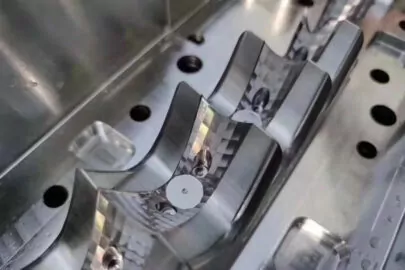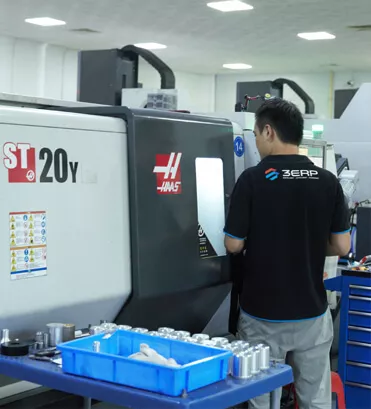What Makes CNC Milling OEM Ideal for Rapid Prototyping

In today’s fast-paced manufacturing landscape, rapid prototyping stands out as a crucial phase in the product development cycle. Companies need to turn ideas into tangible products quickly, efficiently, and cost-effectively. As a leading provider in the industry, Xilici Company (XLC) has witnessed firsthand how CNC milling OEM services have become a cornerstone for businesses aiming to accelerate their prototyping processes. In this article, we’ll explore why CNC milling OEM is the preferred choice for rapid prototyping, how it compares to other technologies such as 3D printing China and injection molding, and what industry trends are shaping the future of prototyping.
The Role of CNC Milling in Rapid Prototyping
CNC (Computer Numerical Control) milling is a subtractive manufacturing process where material is precisely removed from a solid block using a variety of cutting tools. This technology is highly valued for its ability to produce complex, high-precision parts from a wide range of materials, including metals, plastics, and composites. For companies like XLC, CNC milling OEM services offer unmatched versatility and speed, which are vital for rapid prototyping.
- Speed: CNC milling can quickly transform CAD models into physical parts, often within days.
- Precision: Tolerances as tight as ±0.01 mm are achievable, ensuring prototypes closely match final production parts.
- Material Variety: Metals such as aluminum, steel, and titanium, as well as plastics like ABS and polycarbonate, can be machined.
- Repeatability: CNC milling ensures that each prototype is identical, which is essential for testing and iteration.
At Xilici Company, we leverage advanced CNC milling machines with multi-axis capabilities, allowing for the fabrication of intricate geometries that would be challenging or impossible with manual machining.
Advantages of CNC Milling OEM for Rapid Prototyping
1. Fast Turnaround Times
One of the main reasons clients choose XLC for rapid prototyping is the speed at which we can deliver high-quality prototypes. Unlike traditional manufacturing methods that require expensive tooling and setup, CNC milling can start production as soon as the digital design is ready. This significantly reduces lead times and allows for faster iteration, which is crucial during the initial stages of product development.
2. High Precision and Quality
When developing a new product, accuracy is non-negotiable. CNC milling OEM services provide exceptional precision, ensuring that prototypes are not only functional but also closely resemble the final product. This is particularly important for functional testing, fitment checks, and market validation.

3. Flexible Material Options
Rapid prototyping often requires experimenting with different materials to evaluate performance, aesthetics, and cost. CNC milling can process a wide array of materials, from lightweight plastics for visual models to robust metals for functional prototypes. This flexibility makes CNC milling an all-in-one solution for diverse prototyping needs.
4. Cost-Effectiveness for Low Volumes
For low-volume production runs, CNC milling OEM is often more cost-effective than other manufacturing methods. There are no expensive molds or dies required, making it ideal for producing a small batch of prototypes or custom parts. XLC helps clients optimize their costs while maintaining superior quality.
Comparing CNC Milling with 3D Printing and injection molding
3D Printing China: A Complementary Technology
The rise of 3D printing China has added a new dimension to rapid prototyping. 3D printing excels in creating complex geometries and internal structures that are difficult to achieve with traditional machining. It is particularly useful for early-stage prototypes, concept models, and parts with intricate designs. However, 3D printing often falls short in terms of material strength, surface finish, and dimensional accuracy compared to CNC milling.
At Xilici Company, we often recommend a hybrid approach—using 3D printing for initial concept validation and CNC milling for functional prototypes that require higher mechanical properties and precision. This synergy enables our clients to leverage the strengths of both technologies for a more efficient product development cycle.
Injection Molding: Best for Mass Production
Injection molding is another popular manufacturing process, especially for mass production. While it offers excellent repeatability and low per-unit costs at scale, it requires expensive tooling and longer lead times. This makes injection molding less suitable for rapid prototyping, where flexibility and speed are paramount.
However, once the design is finalized through CNC-milled prototypes, XLC can assist clients in transitioning to injection molding for full-scale production, ensuring a seamless move from prototype to finished product.
Industry Trends Influencing CNC Milling OEM for Prototyping
Digital Transformation and Smart Manufacturing
The manufacturing industry is undergoing a digital revolution, with Industry 4.0 technologies like IoT, AI, and cloud computing reshaping how prototypes are designed and produced. At XLC, we utilize advanced CAD/CAM software and real-time monitoring systems to optimize CNC milling processes. This not only improves efficiency but also enhances traceability and quality control.
Customization and On-Demand Production
Market demand for customized products is on the rise, driving the need for flexible and responsive manufacturing solutions. CNC milling OEM services cater perfectly to this trend, enabling the production of bespoke prototypes and parts without the constraints of traditional mass production methods. Xilici Company’s agile manufacturing setup allows clients to order custom prototypes on-demand, reducing inventory costs and minimizing waste.
Sustainability and Material Efficiency
As sustainability becomes a top priority, manufacturers are seeking ways to minimize material waste and energy consumption. CNC milling, when paired with efficient nesting and toolpath strategies, can significantly reduce scrap rates. Additionally, XLC is committed to responsible sourcing and recycling of materials, supporting our clients’ sustainability goals.
How Xilici Company (XLC) Adds Value to Your Prototyping Projects
Choosing the right partner for rapid prototyping can make all the difference in your product’s success. At Xilici Company, we pride ourselves on delivering tailored CNC milling OEM solutions that meet the unique needs of each client. Here’s how we add value:
- Expert Engineering Support: Our team of experienced engineers collaborates closely with clients to optimize designs for manufacturability and cost-efficiency.
- State-of-the-Art Equipment: XLC invests in the latest CNC milling machines and quality control systems to ensure consistent, high-quality results.
- Integrated Services: From design validation using 3D printing China to transitioning prototypes to injection molding for mass production, we offer end-to-end support.
- Global Reach: With a strong presence in China and a network of international partners, XLC serves clients worldwide, ensuring fast delivery and responsive service.
Conclusion: The Future of Rapid Prototyping with CNC Milling OEM
As the demand for faster, more flexible product development continues to grow, CNC milling OEM stands out as the ideal solution for rapid prototyping. Its combination of speed, precision, material versatility, and cost-effectiveness makes it indispensable for innovators across industries. By partnering with Xilici Company (XLC), clients gain access to cutting-edge manufacturing capabilities, expert guidance, and a seamless path from prototype to production.
While technologies like 3D printing China and injection molding each play important roles in the prototyping and manufacturing ecosystem, CNC milling remains the gold standard for producing functional, high-quality prototypes. As industry trends evolve, XLC is committed to staying at the forefront of innovation, helping clients turn their ideas into reality—faster and better than ever before.
